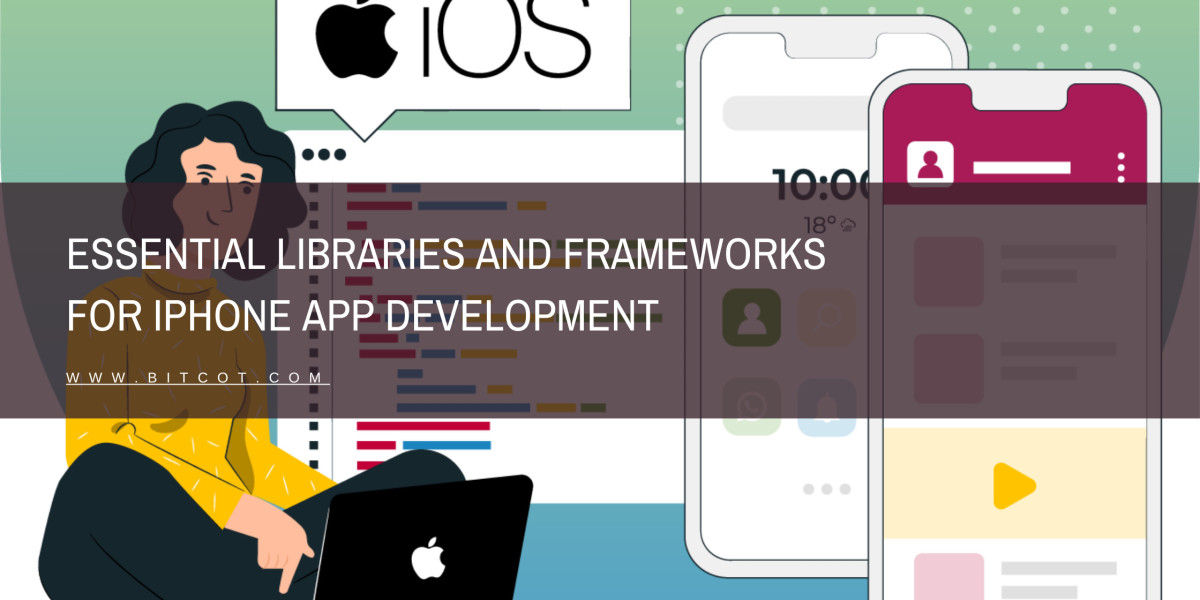Developing an iPhone app requires a strong understanding of various tools, libraries, and frameworks that can simplify the process and enhance the app's functionality. Whether you're building a simple app or a complex one, choosing the right resources can significantly impact your productivity and the quality of your final product. Here’s a look at some essential libraries and frameworks for iPhone app development.
1. UIKit
UIKit is the cornerstone of iPhone app development, providing the necessary interface components to design and manage user interfaces for iOS apps. It includes everything from buttons, labels, and table views to more complex elements like navigation controllers and gestures. UIKit is essential for developers looking to create intuitive and responsive apps, as it ensures that the user interface adheres to Apple’s design principles.
Key Features:
- Extensive UI components
- Supports dynamic and static animations
- Integrated with Interface Builder for easy drag-and-drop design
2. SwiftUI
SwiftUI is a modern framework introduced by Apple that allows developers to build user interfaces using Swift code. It provides a declarative syntax, meaning you describe what you want the UI to do, and SwiftUI takes care of the rest. This approach simplifies the development process, especially for complex layouts and responsive designs.
Key Features:
- Declarative syntax for easy UI development
- Seamless integration with existing Swift code
- Supports all Apple platforms, including iOS, macOS, watchOS, and tvOS
- Real-time previews in Xcode
3. Core Data
For apps that require persistent data storage, Core Data is an essential framework. It allows developers to manage the app’s data model by providing a comprehensive solution for managing the object graph and data persistence. Core Data simplifies the process of handling complex data relationships and ensures that data is efficiently stored and retrieved.
Key Features:
- Object-oriented data management
- Automatic data migration
- Integrated with iCloud for data synchronization across devices
4. Alamofire
Networking is a critical aspect of most iPhone apps, and Alamofire is one of the most popular libraries for handling HTTP networking in Swift. It simplifies the process of making network requests, handling JSON responses, and managing other network-related tasks, allowing developers to focus on building the app’s core features.
Key Features:
- Simplified API for HTTP requests
- Built-in support for JSON and other response formats
- Comprehensive error handling and response validation
5. Realm
While Core Data is powerful, it can be complex for some use cases. Realm offers an alternative database solution that is easy to use, fast, and cross-platform. It allows developers to store and query data efficiently with a simple API, making it ideal for apps that require real-time data processing and offline capabilities.
Key Features:
- Fast and lightweight database engine
- Cross-platform support (iOS, Android)
- Easy-to-use API for data storage and retrieval
- Sync capabilities for real-time data updates
6. RxSwift
Reactive programming has gained popularity in recent years, and RxSwift is the go-to library for implementing reactive programming in Swift. It allows developers to handle asynchronous data streams and events more elegantly, making the code more readable and maintainable. RxSwift is particularly useful for apps with complex data flows and user interactions.
Key Features:
- Powerful reactive programming framework
- Supports asynchronous event handling
- Extensive community support and documentation
- Integrates with other libraries like Alamofire for reactive networking
7. SnapKit
Creating auto layout constraints programmatically can be tedious and error-prone. SnapKit is a powerful library that simplifies this process by providing a concise, readable syntax for defining constraints. It’s particularly useful for developers who prefer to build UI elements in code rather than using Interface Builder.
Key Features:
- Easy-to-read syntax for auto layout
- Reduces boilerplate code
- Compatible with both UIKit and SwiftUI
8. Lottie
Animations play a crucial role in enhancing the user experience. Lottie is an open-source library that allows developers to add high-quality animations to their apps with minimal effort. It supports JSON-based animations created in Adobe After Effects, enabling designers to create complex animations that developers can easily implement.
Key Features:
- Supports JSON-based animations
- Cross-platform compatibility (iOS, Android, web)
- High performance with low CPU and memory usage
Conclusion
Choosing the right libraries and frameworks can make a significant difference in the iPhone app development process. UIKit and SwiftUI are essential for building intuitive user interfaces, while Core Data and Realm handle data management needs. Alamofire and RxSwift streamline networking and asynchronous programming, and tools like SnapKit and Lottie enhance the app’s visual appeal. By leveraging these libraries and frameworks, developers can create robust, efficient, and user-friendly iPhone apps.
Also Read: iOS vs Android App Development: Which to Consider for Your Business in 2024









